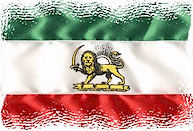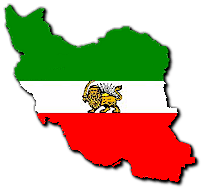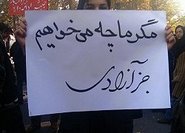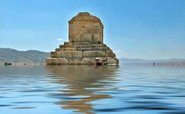The general whose reputation has been forged in the crucible of Iraq does not look like a military figure.
David Petraeus is a spry and youthful 55-year-old, of medium height and build. Perhaps because of two accidents in his army career – he was shot in the chest during an exercise and smashed his pelvis in a parachute jump – he has a slight stoop and a barely perceptible air of physical awkwardness. Instead of the ramrod bearing of a MacArthur, Gen Petraeus resembles a modest headmaster, albeit one with a personal fitness obsession. This outgoing yet scholarly figure is now the brightest star of America’s armed forces. Gen Petraeus has emerged from the bloodshed of Baghdad to become the only genuinely successful general of the “war on terrorism”. No other commander in this campaign, which has lasted exactly seven years, would have reached the cover of Time magazine as “Man of the Year” in 2007. If every war eventually makes a military reputation and propels a uniformed figure to global fame, then Gen Petraeus is the Eisenhower of our time. When he hands over his command in Iraq on Tuesday, he will have achieved a seemingly impossible goal. Gen Petraeus will leave the country in infinitely better shape than found it. The West’s enemies – from “al-Qaeda in Iraq” to the Shia gunmen of Moqtada al-Sadr – are greatly weakened. Is this achievement genuine – or was Gen Petraeus simply lucky enough to take over at the right time? And if his accomplishment is real, how has he done it? Luck has smiled on Gen Petraeus to the extent that he has always seemed to be in the right place to learn the lessons of earlier failures. He graduated from West Point in 1970, just in time to imbibe the hard messages of Vietnam without being personally scarred by the war. This led him into a detailed study of counter-insurgency warfare, a subject that became his consuming interest. In 1987, he went to Princeton and produced a 328-page thesis on the impact of Vietnam on America’s high command. Fast forward to March 2003 and the Anglo-American invasion of Iraq. Gen Petraeus was in command of a spearhead unit – the 101st Airborne Division – and found himself in control of the Shia holy city of Najaf. He had no particular wish to run the place, but amid the breakdown of law and order unleashed by the war, he could not find a civilian mayor to take over. He was in the right place to grasp the central mistake of his high command: the invasion had decapitated Iraq’s leadership without deploying enough troops to secure the country and prevent its spiral into chaos. Gen Petraeus completed another tour of duty in Iraq in 2004/5, when he was in charge of training the new army and police force. These units were America’s “exit ticket” from Iraq, in line with President Bush’s statement that “we will stand down as the Iraqis stand up”. But Gen Petraeus was later criticised for over-optimism and for greatly overestimating the abilities of the newly trained formations. Many were infiltrated by militias and proved unreliable in battle. Once again, he was in an ideal position to learn some hard lessons: declarations of victory must be avoided and American soldiers would not be able to hand over to their Iraqi counterparts in the near future. Instead, they would have to stay for longer than he once thought. After this tour, Gen Petraeus returned to America and wrote what was to become the book on counter-insurgency warfare. Together with a Marine Corps general, he produced the US military’s first field manual on this vital subject for 20 years. The 282 pages are a tersely written, closely argued set of instructions on how to win supposedly unwinnable wars. Drawing on a host of historical lessons – from Vietnam to Lawrence of Arabia’s campaign against the Turks – the book could be read as a manual on how to rescue the situation in Iraq. The central insight was that protecting civilians was the sine qua non for beating insurgents. If people felt safer, they would back the security forces and turn against the gunmen. But this required far more troops than were in Iraq at that time. Most importantly, it also required those forces to live among the population and fight in a completely different way. Once again, Gen Petraeus was in the right place at the right time. Just as he became the army’s acknowledged expert on counter-insurgency warfare – and the author of an unofficial manifesto for winning in Iraq – President Bush was casting around for a new strategy. After the bombing of a Shia shrine in Samara in February 2006, the bloodshed had escalated to become a sectarian civil war. By the summer, a wave of attacks was killing 2,500 civilians a month. Mr Bush lost confidence in his military leaders and ordered his civilian advisers to launch a comprehensive policy review. They came up with two key recommendations: send a “surge” of another 30,000 troops to Iraq and adopt the new doctrine of counter-insurgency warfare. America’s service chiefs were unanimously opposed to the “surge”. They feared the strain on the military machine and gave warning that too few troops would be left to cope with emergencies elsewhere. But in January last year, Mr Bush overrode his key generals and announced that another five army brigades and 4,000 Marines – almost 30,000 troops in total – would go to Iraq. The new units would be concentrated in Baghdad, where force levels would rise from 17,000 to 40,000. A new strategy required a new commander, and Gen Petraeus was the obvious man. “Population security” was the best way of summing up his goal when he arrived in Baghdad in February 2007. In a message to his troops, he described safe neighbourhoods as the “overriding objective of our strategy”. “We can’t commute to the fight in counter-insurgency operations; rather we have to live with the population we are securing.” Gen Petraeus called on his soldiers to “embrace the warrior-builder-diplomat spirit”. The troops were duly deployed in the streets and suburbs of Baghdad, usually alongside Iraqi forces. Meanwhile, a crucial development helped transform the situation. The Sunni tribes of Anbar, Iraq’s largest province covering a huge area stretching from Baghdad’s western approaches to the border with Jordan, began turning against the gunmen. Anbar had once been the heartland of the Sunni insurgency. But the fighters were so brutal that they drove their supporters away. “Al-Qaeda in Iraq” was especially vicious. They took to severing the fingers of smokers on the grounds that they were supposedly breaking Islam’s prohibition on narcotics. Gen Petraeus saw his chance to divide the gunmen from the population – the central goal of counter-insurgency warfare. He paid the Sunni tribes to form self-defence militias, which turned on the insurgents to devastating effect. This combination of a popular “awakening” and the tactics of “surge” began to pay dividends. Violence fell throughout 2007 and into 2008. Last month, there was an average of 20 daily attacks on US troops, compared with 180 in June 2007. In July, 13 American soldiers were killed, compared with 126 in May last year. Some 500 Iraqi civilians still die a month – but in 2006 the monthly toll often exceeded 2,000. How much of this was down to Gen Petraeus? Critics point out that the Sunni “awakening” would probably have happened anyway. “I don’t think anyone can say that Petraeus stabilised Iraq,” said Prof Gareth Stansfield, from the Middle East programme at the Chatham House think tank. “His move to develop the surge came at the same time as other developments in Iraq, including the conflict between Sunni and Shia beginning to run out of steam and various political agreements coming to fruition.” True to his talent for being in the right place at the right time, Gen Petraeus may have arrived in Iraq at exactly the moment when the insurgency was burning itself out. But there seems little doubt that the “surge” and his new tactics were the key enablers, reinforcing and driving the positive trends. The man has carefully shielded himself against the doubters. Gen Petraeus has always agreed that other factors were “at least as important, perhaps more important”, than the “surge” itself. He will take this cautious wisdom to his next job as head of Central Command, where he will have responsibility for all the many fronts of the “war on terrorism”, ranging from Afghanistan and Pakistan to Iraq and Somalia. And unlike Eisenhower, you can be sure that Gen Petraeus will be careful never to declare victory.


























 اخبار مربوط به زندانیان سیاسی و نقض حقوق بشر
اخبار مربوط به زندانیان سیاسی و نقض حقوق بشر

















 Tulips in Holland
Tulips in Holland












No comments:
Post a Comment